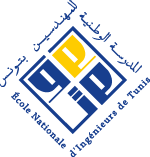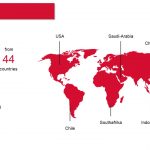Click
on the partner logos in order to take look at their B2B profiles

iTUBS
Interfacing Science and industry – www.itubs.de
iTUBS is enabler for Technology Transfer and High-Tech Development in multiple domains, such as Computer Engineering, Space, Mobility, Metrology, and Pharmacy. The company is steadily growing and advancing in each domain. iTUBS has been interacting in national, European and global ever since, and continues with creation of new industrial and collaborative partnerships.
iTUBS department for Next Generation Computing has expertise in researching Embedded and High-Performance Computing, where it develops software as well as hardware solutions in order to accelerate and enable applications in a variety of fields such as:
Remote Sensing, Signal Processing, Information Retrieval, Image Processing, and Robotics, but not limited to these.
A special focus is placed on advanced hardware accelerator design and software mapping techniques for multi-processor systems.
iTUBS coordinates the H2020 project S4Pro and leads the developments efforts for On-board Processing Software and a Payload-Processing Unit. The objectives are to miniaturize on-board computers, provide power efficient processing solutions and enable computationally expensive applications to be processed in space by accelerating them through both parallel SW and HW. tings.

DSI-AS
- DSI mission & vision
- What does DSI do?
- Why collaborating with DSI?
- Products & solutions developed in S4Pro
- DSI's clients
We provide outstanding expertise in the design, implementation, production and qualification of dependable electronics. DSI combines high-end technologies and innovative ideas into cutting-edge products. Innovation, performance and quality are our daily drivers for ensuring mutual success together with our customers.
The customer’s satisfaction is the central element of DSI’s success. We are challenged by our partners worldwide to create tailored technology solutions in response to their state-of-the-art applications’ needs. We stand for the dependability of our products as well as our offered services. Our promise to you is a dedication to high quality, on-time delivery and cost effectiveness.
DSI Informationstechnik GmbH is a SME located in Bremen, Germany. It was founded as a spin-off of the University of Applied Sciences Bremen in 1997. At the end of 2016, the DSI Group was restructured, with the result that two independent companies – DSI Aerospace Technologie GmbH and DSI Datensicherheit GmbH.
DSI Aerospace Technologie GmbH provides high-speed electronics for airborne and space applications. The fields of activity are dedicated to the engineering and development of solutions for computers, information technologies, control systems and advanced communication systems. DSI-AS is specialized in designing digital systems, which provide significant resource requirement savings in terms of power consumption, mass and volume. At the same time, our integrated approach provides significant increases in processing power as well as in reliability due to the usage of the newest, qualified FPGAs and ASICs.
The main products that DSI-AS offers within the different activity fields are:
- Payload Data Handling Units: Used for on-board data reception, storage, processing (formatting, compression, encryption) and playback. These type of units are usually part of the avionics of every Earth Observation or Science satellite as well as on Deep Space Probes.
- Satellite & Instrument Computers: Used as the central computer of the satellite or the instrument with which control and monitoring tasks are being performed. These type of units exist on every satellite.
- Special Control & Data Processing Units: Usually specifically designed as specified by the customer.
- Ground Equipment incl. Test Equipment: For DSI-AS’ internal usage and as individual developments for customers.
DSI-AS initiates and takes part in a multitude of externally funded R&D activities (ESA, DLR, H2020, EFRE, BMWi, BMBF, etc.). In this way DSI-AS is able to remain on the cutting edge of the technology offering attractive products to potential and existing customers.
The following products are within DSI’s responsibility in S4Pro:
- cPCI-SS Mass Memory Module (self-developed HW, FW)
- cPCI-SS X-Band High Data Rate SDR Transmitter Module (self-developed HW, FW, and SW)
- cPCI LEON4 based System Controller (COTS HW, self-developed SW)
DSI-AS offers the products and solutions developed in the scope of the S4Pro project, such as the cPCI-SS mass memory module with a 4Tbit storage capacity. The development of the RTG4-based mass memory module allows for significantly higher speed (up to 6 Gbps) data storage and playback than previous generation mass memory products in a compact 6U board size. It offers multiple interfaces for the exchange of science or control data (e.g.: SpW, PCIe, WizardLink/HSSL, Ethernet).
The architecture of the X-Band SDR is designed as a flexible “working horse”. In S4Pro the Kintex UltraScale-based 3U cPCI-SS board represents the 1Gbps DL transmitter. Besides telecommunication the board serves a broad range of possible applications. A mezzanine connector can be used for further extensions (e.g.: Flash partitions, SDR RF-Frontend).
For the system controller, a LEON4 COTS development board (GR-CPCI-GR740, Gaisler) is procured. This board controls all boards of the S4Pro Demonstrator (mass memory, payload processing, and telecommunication). For the software development DSI uses the open source real-time operating system RTEMS v5.
ESA, Airbus Defense and Space, Thales Alenia Space, OHB, RUAG, DLR, APSI, STI, the European Commission, and others in projects like KOMPSAT II, SAR-Lupe, SatcomBW, TET, PROBA V, EuroHawk, GökTürk, EnMAP, Galileo, ExoMars, SARah, EDRS, MetOp-SG, JUICE, Biomass, FLEX, KOMPSAT-7, and PLATO.tings.

DLR – Microwaves and Radar Institute
Observation and continuous monitoring of the Earth System and its changes using innovative SAR techniques – www.dlr.de
- DLR Mission & vision
- What does DLR-HR do?
- Why collaborating with DLR-HR?
- Products & solutions developed in S4Pro?
Observation and continuous monitoring of the Earth System and its changes using innovative Sythtetic Aperture Radar (SAR) techniques.
For more than 30 years, the DLR – Microwaves and Radar Institute (HR) has been active in the field of microwave remote sensing. It is internationally recognized for its leading role in SAR system design, operation and data processing with expertise in air- and space-borne SAR interferometry and polarimetry, innovative SAR acquisition modes and information extraction techniques. The Institute‘s strength is the execution of long-term research programmes with applications in remote sensing, traffic monitoring and, last but not least, reconnaissance and security. In 2003, DLR-HR proposed the TanDEM-X mission, which, in 2010, became the first spaceborne bistatic and the first operational close formation flying radar system in space. Within its SAR Technology department the Institute builds and operates innovative airborne SAR systems used to demonstrate and develop new SAR applications for future SAR missions. These are investigated and matured within the Radar Concepts and SAR Satellite Systems departments, which also proposed the Tandem-L mission proposal, a German national radar mission in L-band.
The Institute is engaged in all European and German national SAR research programs, including Copernicus Sentinel-1, Copernicus Evolution through ROSE-L, Sentinel-1 NG, and Earth Explorer Missions (e.g. BIOMASS) on European/ESA level and TerraSAR-X/TanDEM-X and HRWS on German national level.
Within S4Pro, DLR-HR concentrated on high-resolution wide-swath (HRWS) SAR concepts presently under consideration for most of the future SAR mission. In particular, it improved the efficiency of the azimuth filter for a multi-beam DBFSAR sensor operating in staggered SAR mode and supported its implementation for use in space-qualified hardware. Additionally, it proposed operating concepts for a very wide-bandwidth system using a frequency-scanning array antenna (FScan mode) and developed a suitable data compression strategy for such type of SAR sensors.

OHB Italia
We.Create.Space – www.ohb-italia.it
- What does OHB Italia do?
- Why collaborating with OHB Italia?
- Products & solutions developed in S4Pro
- OHB Italia's clients
OHB Italia S.p.A. is part of the European Space and Technology Group OHB SE (Orbitale Hochtechnologie Bremen), listed on the Frankfurt Stock Exchange. It is one of the three top system integrators in Europe with 2900 employees worldwide and total revenues exceeded EUR 1 billion in 2019. OHB Italia S.p.A. was funded in 1981, nowadays it is one of the two major satellite system integrators in Italy with more than 200M€ backlog and 96M€ revenues in 2019.
The company employs 210 people between staff and collaborators, with a high percentage of graduates (78,5%) whose degrees are mainly in Aerospace Engineering, Math and Physics, Electronic Engineering, Information Technology, with headquarters and Clean Room facilities in Milan and offices in Rome and Benevento. OHB Italia S.p.A. is prime contractor for various ASI/ESA missions and the main customers are the Italian and European Space Agencies, Research Institutes, Universities, and all the industrial key players in the space market, with special attention to export domain.
OHB Italia provides innovative solutions combined with high performance and a strong focus on customer satisfaction.
It is a recognized national leader in the fields of Satellite & Missions, Earth Observation, Space Situational Awareness, Electronics & Mechanisms, Scientific & Planetary Instruments, as well as a respected international player in the same fields.
OHB Italia is one of the few companies in Europe that can take care of a mission or a payload end-to-end.
Working as a System Designer, Payload Specialist, and Full-System Integrator, up to the launch and in-space operations, OHB Italia can provide customized solutions for different needs.
OHB Italia developed the high-end algorithms for on-board elaboration in two different optical applications: Ship Detection, and Vegetation Monitoring. Both applications were carefully tailored to meet the capabilities of future generations of satellite platforms, including nano- and micro-satellites, and integrate the most up-to-date needs from end-users.
Private firms or companies, public entities, research centres, institutions, academia.

QASCOM
Leadership in Space Cybersecurity – www.qascom.it
- What does QASCOM do?
- Why collaborating with QASCOM?
- Products & solutions developed in S4Pro
- QASCOM's clients
Consulting, engineering services and analysis of information systems and technologies in the sectors: telecommunication, navigation, aerospace, security, transport. Design, production, research and development of software and hardware in the sectors: telecommunication, navigation, aerospace, security, transport.
Qascom success is based on a powerful combination of talented employees, solutions and support that exceeds the customers’ expectations.
Qascom covers 100% of GNSS security needs for assessing the risks, performing security test campaigns, analysing the results, implementing the security strategies as well as the detection and mitigation systems.
Qascom has developed a set of products for GNSS signal simulation, satellite vulnerability assessment, interference simulation, detection and location.
In particular, thanks to S4Pro project, Qascom developed multi-constellation (GPS, Galileo) Receiver for space applications, capable of computing PVT using snapshot-based techniques, and real-time processing, deployable on satellites and launchers.
We offer engineering services in the domain of satellite navigation, authentication, robust PNT, cryptography, space cyber intelligence, interference geolocation for ground or space assets.
Within the scope of S4Pro project, Qascom developed a low power, multi-constellation (GPS, Galileo), GNSS Receiver capable of using snapshot-based positioning techniques.
ESA, GSA, EC, Leonardo S.p.A., ASI, Spirent, Airbus, Thales Alenia Space, GMV Aerospace and Defence

Ecole Nationale d’Ingénieurs de Tunis
- ENIT mission & vision
- What does ENIT do?
- Why collaborating with ENIT?
- Products & solutions developed in S4Pro
- ENIT's clients
Our strength: Excellent skills in Signal Processing, pattern Recognition, Image Processing and IT
ENIT, the Engineering School of Tunis, is a Higher Education institution, member of the University of Tunis El Manar, which is the biggest multidisciplinary University in Tunisia, with about 40000 Students in all disciplines.
Our group belongs to the LRSITI Research Lab, one of the most famous labs in Africa and the region. It is located in the EE Department at ENIT and has some 200 researchers mainly in signal, image and speech processing, as well as Natural Language Processing and Ontology. This helps us make solutions possible through adequate research and development in both SW and HW development, thanks to a devoted team that cooperates with partners from all sectors, inside and outside Tunisia. Work hard for a Sustainable impact through dissemination, communication and business modelling.
We have developed strong relations to many laboratories in Region as well as in Europe, America and the Middle East. We are involved in EU Projects since more than 30 years and have cooperated with famous researchers from Europe, USA and Saudi Arabia.
The ENIT LRSITI Research Lab has:
- developed the first DB in cursive arabic and latin script, now cited by more than 300 researchers all around the word.
- Supervised hundreds of theses including PhDs, Masters and equivalent diploma.
- Published hundreds of scientific papers with high impact factors.
- A strong team working on SW and HW development
The LRSITI research group is member of the eldest and reputed laboratory in Digital Signal processing and Information processing in Tunisia and North Africa. Our team is always open to establishing collabotations with partners from Industry and Research and Educational Institutions).
Our background in supervision various research activities at ENIT and our good cooperation with famous and strong groups around the world, especially in Europe and North America.
We propose to our partners:
Software and hardware solutions for versatile problems in Research and Development, ranging from the development of appropriate programs in the most useful programming languages in Windows, Linux and MacOs to the implementation on various kinds of hardware.
the opportunity to work with our highly qualified team, whose members have already worked on international projects (mainly European).
Within S4Pro, ENIT developed and analysed algorithms for image processing and pattern recognition. We work on detection and recognition of objects in Images and videos as well as the adaption of the developed SW for special needs. Our Methods are mostly developed by high qualified scientists and engineers from Universities and private companies, in cooperation with highly qualified researchers from Europe and North America. We implemented several methods that give good results, and are implemented in Python and compatible with MATLAB. The ENIT Team members are also experienced with C++ and pHp.
ENIT has experience in collaborating with public and private organisations. The ENIT Team is always open for cooperation with European and other international partners.



